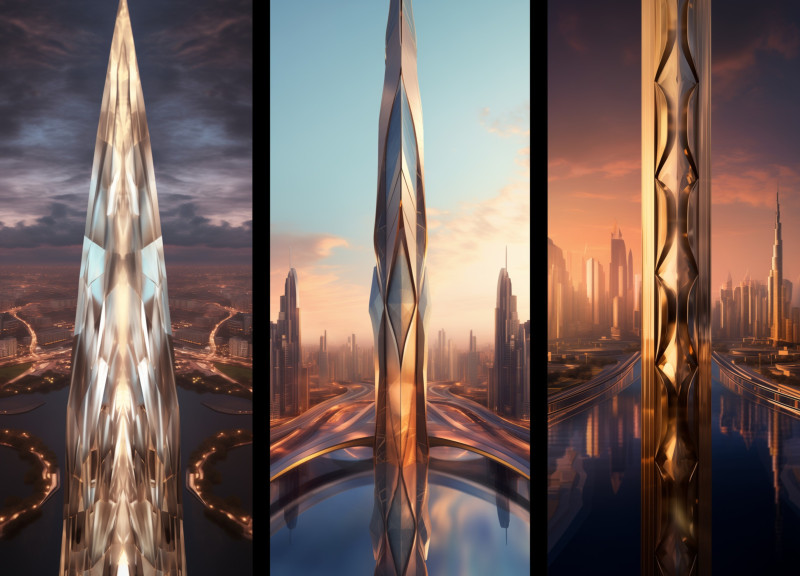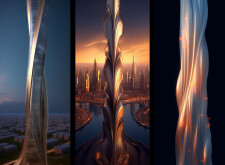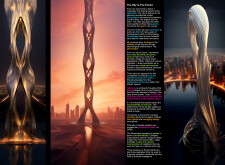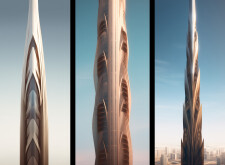5 key facts about this project
### Overview
Located in Dubai, the skyscraper design reflects the city's dynamic urban identity while incorporating contemporary architectural principles. The project integrates residential, commercial, and recreational spaces within a single structure, aiming to enhance the urban experience and promote connectivity among various functions. The design is informed by the surrounding desert landscape, translating natural forms into an innovative building that aligns with the cultural and environmental context of Dubai.
### Architectural Strategies
#### Form and Function
The skyscraper features a twisting and spiraling profile characterized by sleek lines and faceted surfaces. This distinct geometry not only enhances aesthetic appeal but also improves structural performance against wind forces characteristic of the region. The tapering elements and articulated facades emphasize verticality, creating visual dynamism that shifts throughout the day as natural light interacts with the building, particularly during sunrise and sunset.
#### Material Selection
Material choices are central to both the visual and functional aspects of the skyscraper. The design utilizes a combination of glass for transparency and reflection, steel for structural support, and aluminum for lightweight durability in facades. Reinforced concrete is employed in the foundational and core elements to ensure stability. Additionally, innovative materials such as smart glass or energy-efficient coatings are incorporated to advance sustainability goals, reducing energy consumption and enhancing occupant comfort. The façade design emphasizes environmental performance, optimizing daylight penetration while minimizing reliance on artificial lighting.
### Integration of Community and Technology
The project exemplifies compact urban design by accommodating a diverse mix of uses within a limited footprint, thereby minimizing urban sprawl. It incorporates smart city technologies to optimize resource management and improve the quality of urban life. The design also prioritizes the inclusion of public spaces, such as parks and gardens, encouraging social interaction among residents and visitors. The interplay of these elements contributes to a sense of community and enhances the overall urban fabric of Dubai.






















































